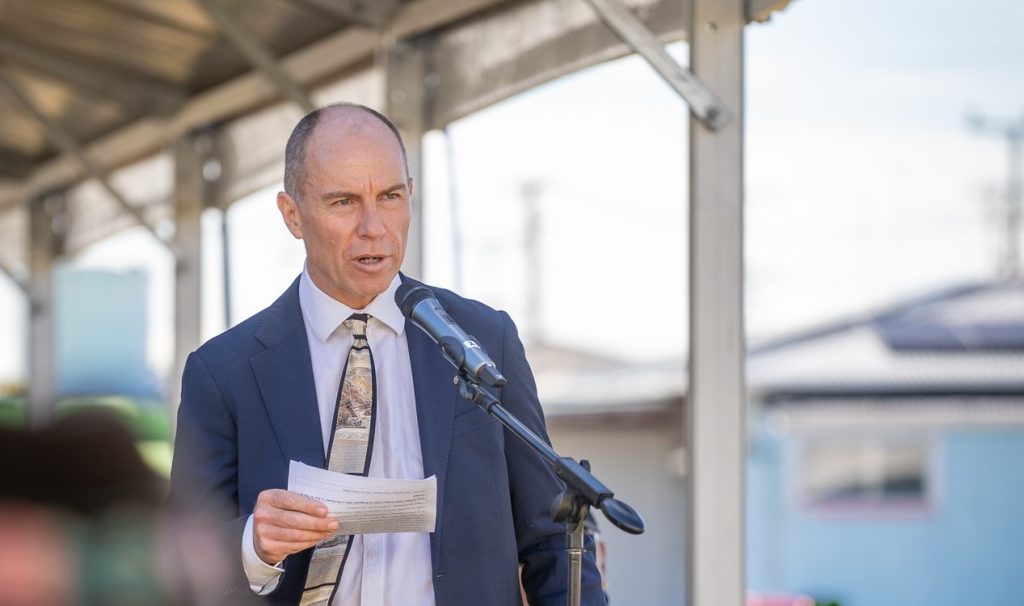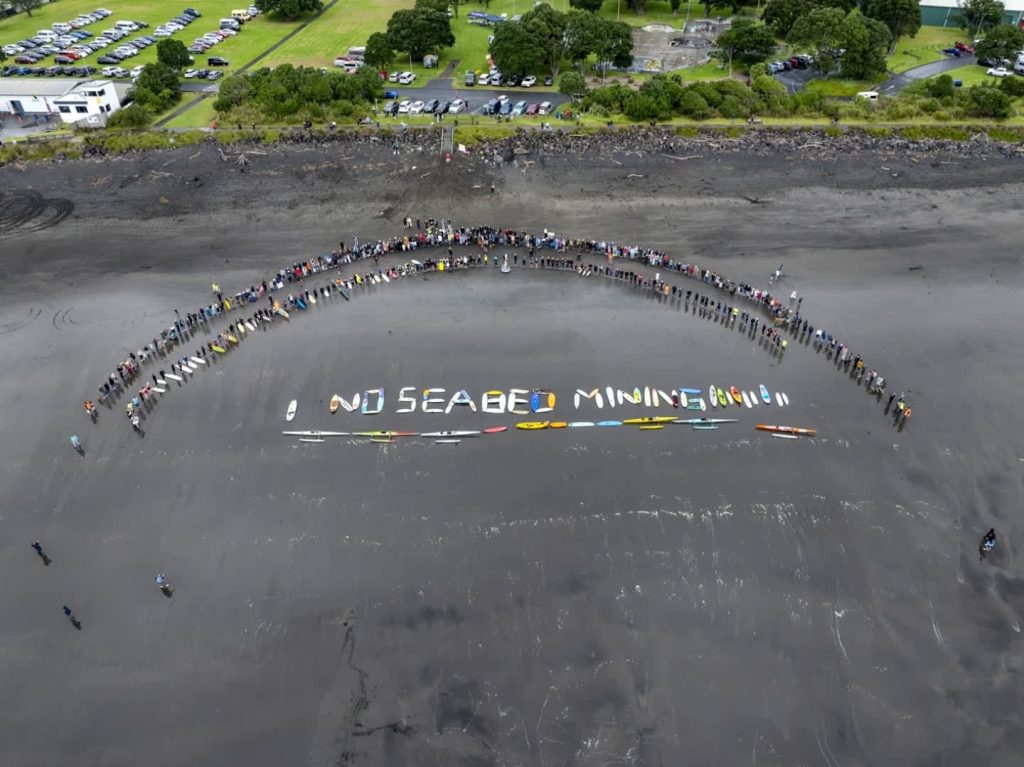
By Moana Ellis, Local Democracy Reporting
Whanganui mayor Andrew Tripe has criticised gaps in a proposal to fast-track seabed mining off the South Taranaki coast.
Tripe said the fast-track approvals application for marine consents, lodged by Trans-Tasman Resources (TTR), lacks clarity and fails to provide detail of claimed benefits for Whanganui.
The mayor also slated the Australian mining company for failing to engage with local stakeholders.
TTR is seeking go-ahead from the Environmental Protection Authority under the Fast-track Approvals Act 2024 for a billion-dollar offshore minerals venture.
Its operations over 35 years in the South Taranaki Bight would mine iron sands rich in vanadium and titanium.
Opponents, including mana whenua, fear sediment plumes would cause environmental damage, threatening marine ecosystems and customary fisheries, including kelp forests, sponge gardens, fish nurseries and endangered species such as pygmy blue whales.

Tripe said Whanganui District Council welcomed economic development – “especially when it is grounded in genuine partnership, transparency and clear benefit to our district”.
“Whanganui is always open to new business, investment and opportunities that put more money in the pockets of our people,” he said.
However, the application lacked the clarity and detail required for the council and its communities to “meaningfully assess” its impact or benefits, the mayor said.
The Taranaki VTM project is to extract up to 50 million tonnes of seabed material annually for 20 years, and to recover and export up to five million tonnes of high-value iron ore and mineral sand concentrates.
Forty-five million tonnes of de-ored sediment would be returned to the seabed.
‘Seabed dredging’
“The operation is essentially a seabed dredging operation with shipboard processing … and off-loading onto bulk carrier vessels for export,” TTR said in its application.
The company said the venture, in waters ranging from 20m to 50m deep and between 22km and 36km offshore, was poised to bring significant economic, infrastructure and job growth to the Whanganui region.
The miner expected to generate more than $850 million a year in export earnings and spend $234 million annually in Taranaki and Whanganui on employment, services and regional support activities, including $44m a year in South Taranaki and Whanganui.
The company plans to establish its head office in New Plymouth and create a training and logistics base in Hāwera. It names Whanganui Port as a key support base for mining operations, saying Whanganui could host vessels and play a role in marine research, supply logistics and monitoring.
The application suggests the activity would spark upgrades and investment in port and transport infrastructure.
Tripe said no discussions had been held with the council – which owns and oversees the port – to explore this in any practical detail.
Mark Petersen, chair of the Board of Directors of the Whanganui Port Operating Company and Whanganui Port Limited Partnership, said he had not heard from TTR and knew nothing of the company’s plans for the port.
Te Pūwaha port revitalisation project director Hayden Turoa and Whanganui Port general manager Geoff Evans said they were also in the dark and there had been no contact with TTR.
‘Blur rather than clarify’
The application says 303 full-time equivalent jobs would be created across Taranaki and Whanganui – but Tripe said it did not identify how many would be in Whanganui or what those jobs were.
“References to ‘Taranaki/Whanganui’ and ‘South Taranaki/Whanganui’ blur rather than clarify the proposed benefits to our district,” he told Local Democracy Reporting (LDR).
Tripe also questioned TTR’s claims of community engagement, including discussions with “the local community” around engineering and maintenance services.
He said TTR referred to engagement with the council dating back to the time of former Mayor Annette Main, who served from 2010 to 2016.
“To date, under my mayoralty, there has been only one engagement with TTR, which included a commitment to provide more information – a commitment that has not been fulfilled.”
He said no iwi within the Whanganui region were listed in the application as having been consulted by TTR, and this was a significant omission.
The proposal appeared vague and lacking in the kind of local engagement and clarity needed for the Whanganui community to consider its merits, Tripe said.
‘For any project to gain traction in Whanganui, it must be specific, transparent and based on partnership with both council and iwi.’
“We remain open to conversations with TTR. But for any project to gain traction in Whanganui, it must be specific, transparent and based on partnership with both council and iwi.”
LDR asked the mining company what specific operational activities and infrastructure upgrades were planned for Whanganui Port, and whether TTR intended to invest directly in the port.
TTR was asked for the expected scale and timeline of any investment, and if any discussions had been held or agreements made with the council, the port operator, port directors or the Te Pūwaha partnership between iwi, local and central government, and community/industry partners.
Executive chairman Alan Eggers said Trans-Tasman Resources was focused on its fast-track application and gaining the approvals necessary to proceed with its project.
“If successful, the company will be required to complete a bankable feasibility study and this will involve detailed consultation with relevant parties on all components of the project, including activities planned for Whanganui Port.
“As outlined in its application, Trans-Tasman Resources intends to operate its marine research and monitoring, geology and grade control drilling vessels from Whanganui Port.”
Awa FM – Te Reo Irirangi o Whanganui
For more of our people, our stories, our way, click News or follow us on Facebook.
